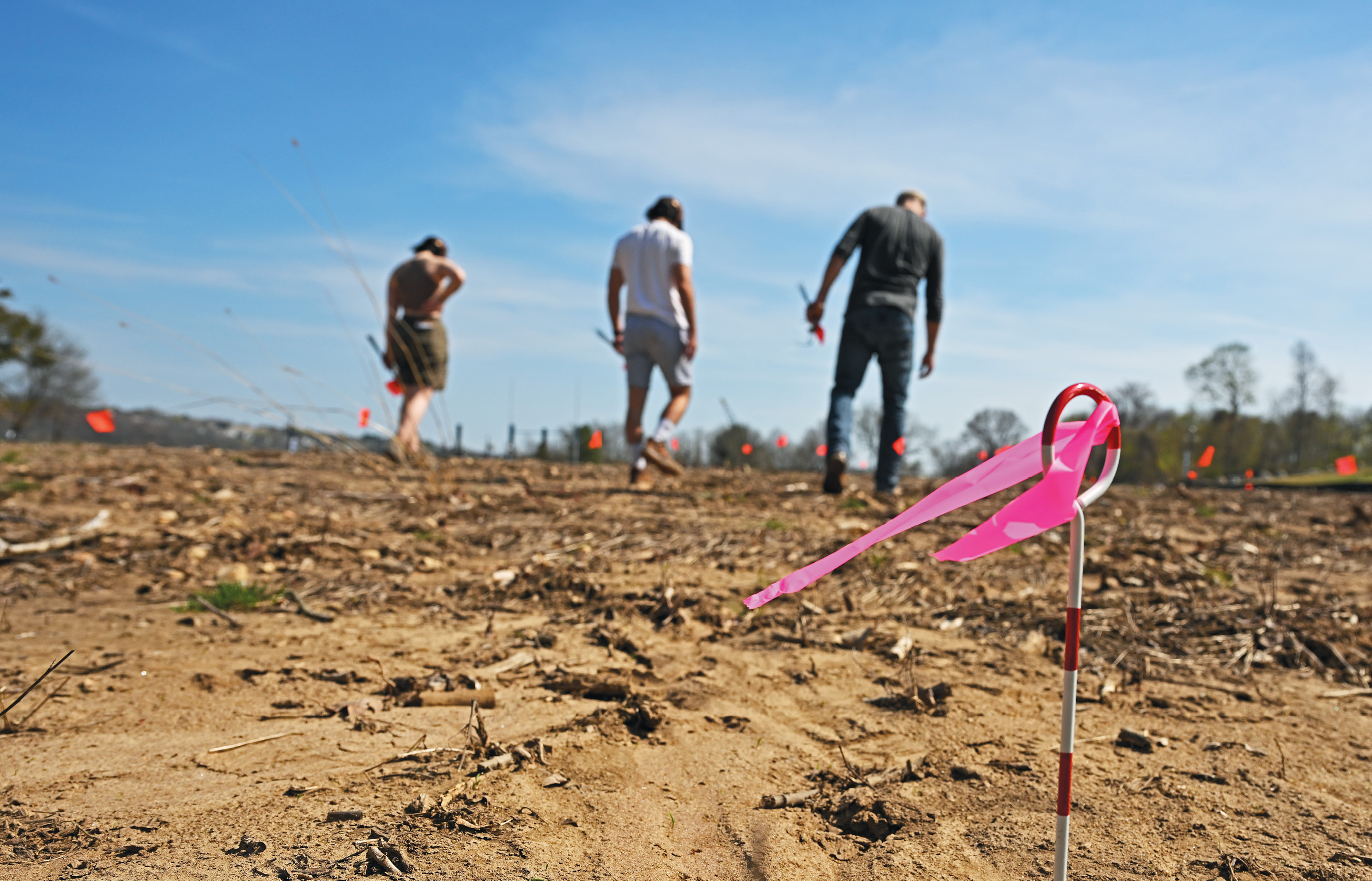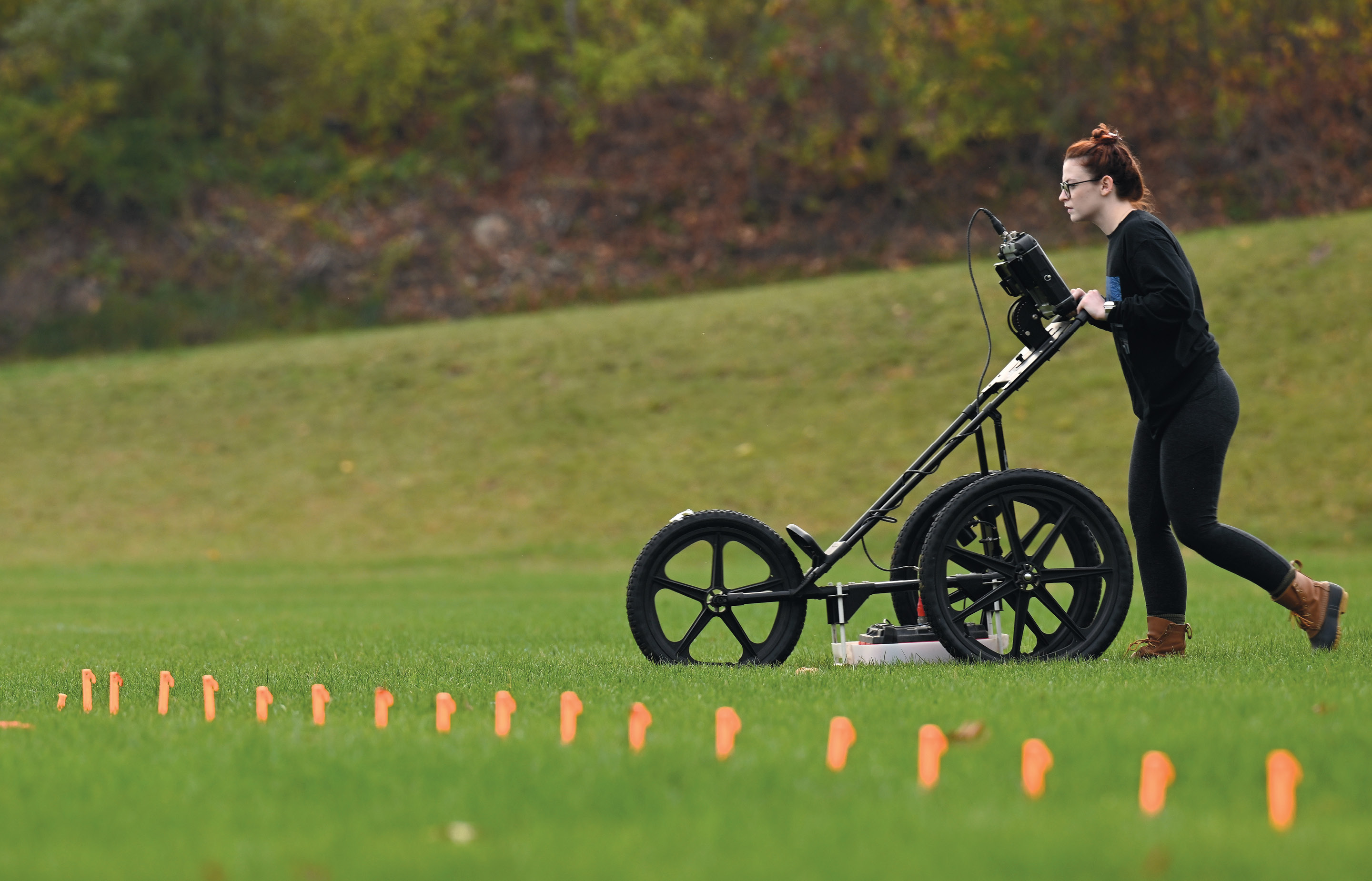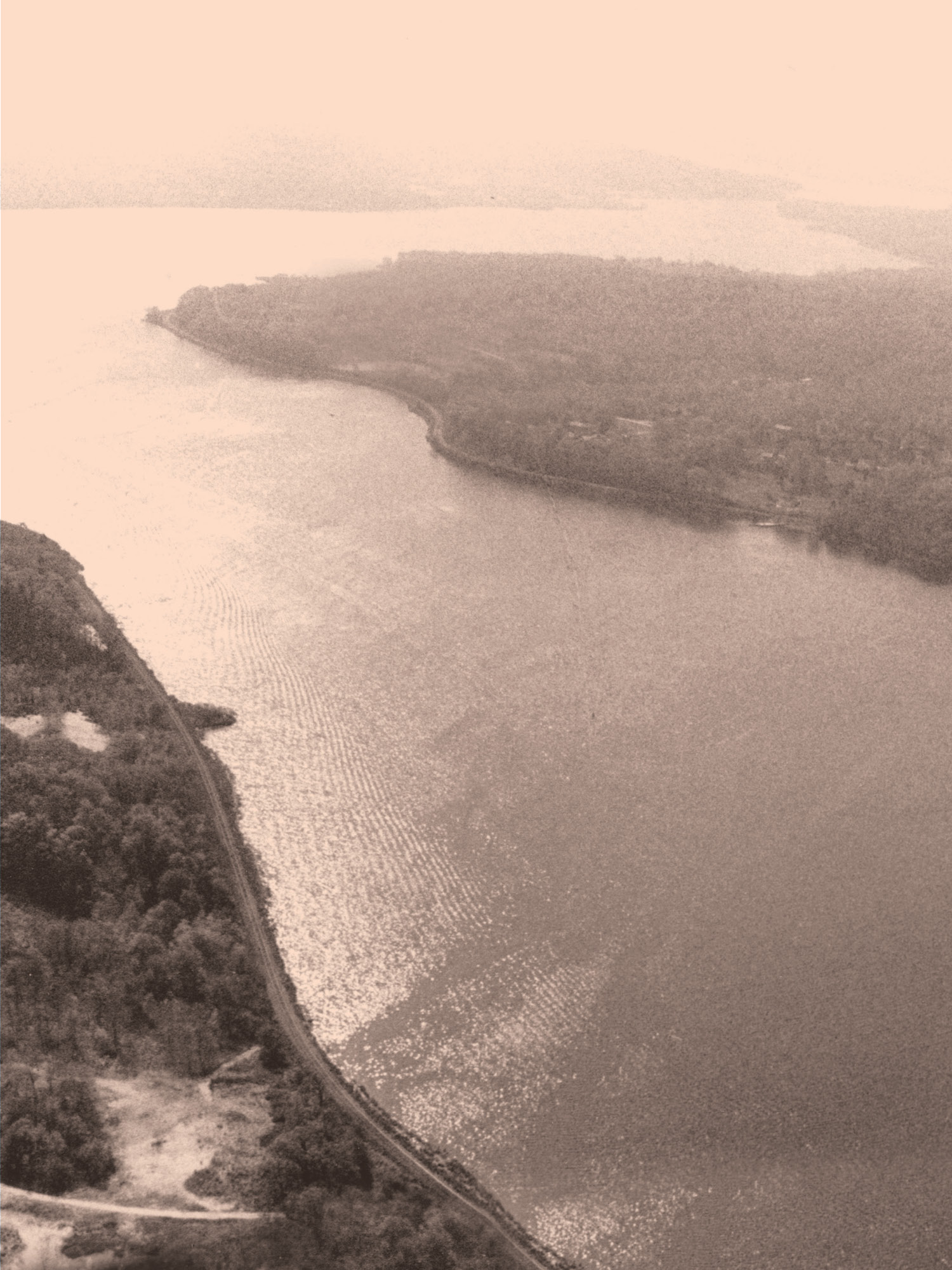Long Journey Home
Four decades after they were accidentally unearthed on Conn grounds, the remains of an Indigenous American have been repatriated.
Sometime in the 16th or 17th century, an Indigenous North American individual died and was carefully buried on land near the banks of what we now call the Thames River. This ancestor, who likely descended from one of the many tribal communities who lived in the territories known today as Connecticut, would rest in peace for hundreds of years.
By 1981, European settlers and their descendants had long overtaken the area, the Industrial Revolution had given way to the Space Age and Connecticut College was celebrating 70 years since its founding. While land was being cleared to make way for a new athletic field near the campus riverfront in March of that year, a bulldozer operator inadvertently uncovered human remains.
Construction was halted temporarily upon the discovery, and Harold Juli, then an assistant professor in Conn’s Anthropology Department, was called to the scene. Certain aspects of the burial indicated to Juli that the person was likely Native American and, as was customary in anthropology at the time, he began a three-day salvage excavation to remove the bones before construction continued.
During or after 1982—no records have been found—Juli transferred the remains to Marc Kelley, a biological anthropologist specializing in the study of human bones at the University of Rhode Island. Juli and Kelley eventually co-authored a report on the discovery.
According to an article published in The Day shortly after the ancestor was unearthed, Juli said he would notify the Connecticut Indian Affairs Council about the discovery, which he did later that month. In his letter, he explained that a “prehistoric Indian” burial had been exposed, damaged and scientifically excavated.
Yet even at the time, Juli seemed to sense that longstanding anthropological practices would eventually need to be rethought.
“Connecticut Indians have become concerned about what happens to the bones of their ancestors after chance excavations,” Day reporter Steven Slosberg wrote at the time. “Juli said the potential exists for argument over whether the remains should be reinterred or preserved for scientific and historic value.”
In the end, it would take more than 40 years, a federal push and a stroke of luck to bring the ancestor home.



